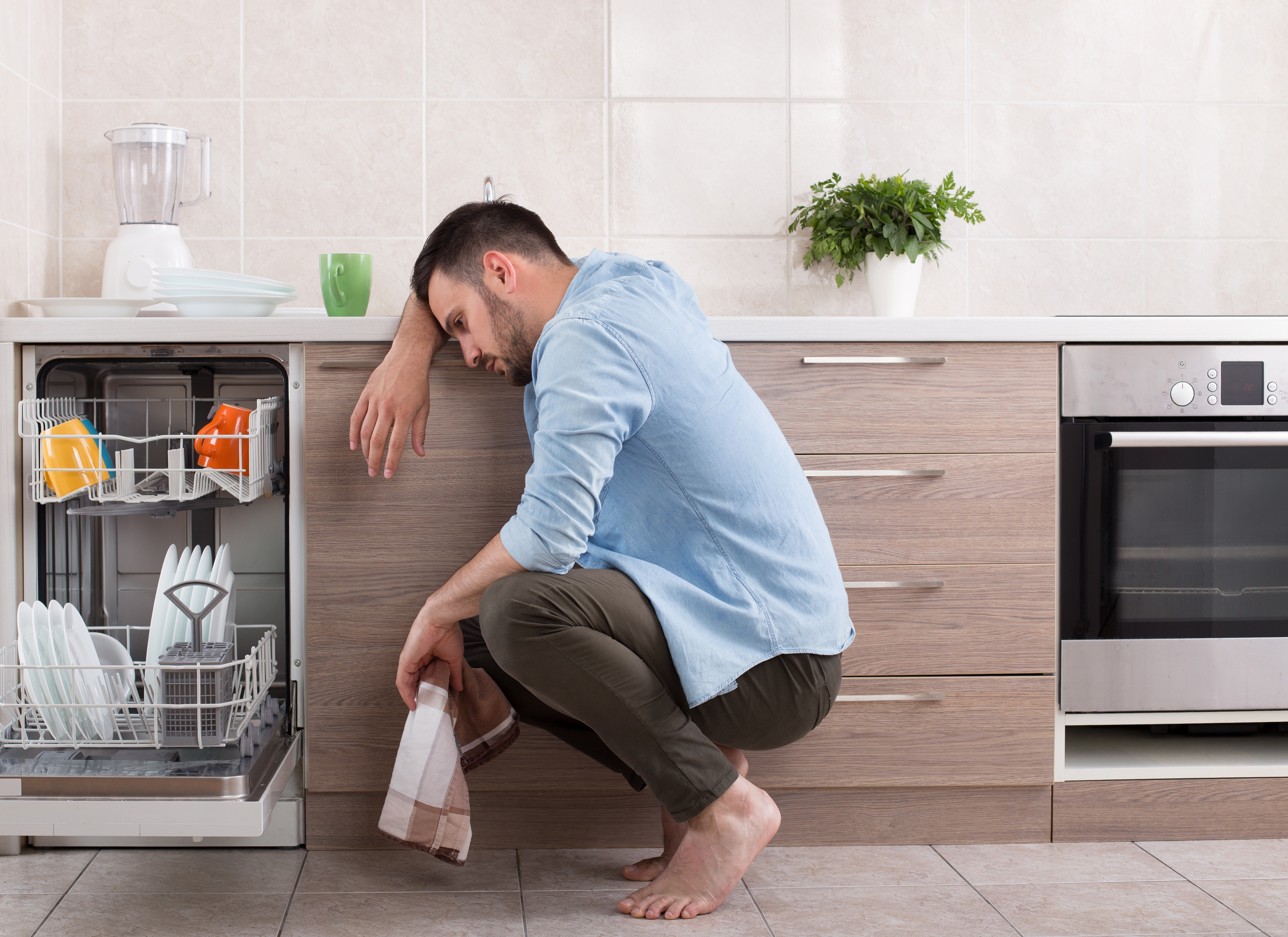
At a Glance:
The Importance of a Dishwasher That Drains
3+ Ways to Fix a Dishwasher That Doesn’t Drain
What Do I Do If My Dishwasher Still Doesn’t Drain?
If you’ve opened your dishwasher recently and asked yourself, “Why is my dishwasher not draining,” you’re not alone. Standing water is a common problem for dishwashers, and often, the solution is quick and easy. However, there are other times when the process is more hands-on. If you’re tired of searching “water not draining from dishwasher,” take a moment to review our assessment, beginning with the easiest methods to the more advanced.
And for good measure, we’ve also included four top-rated dishwashers, just in case you decide to ditch the DIY and go brand-new.
The Importance of a Dishwasher That Drains
For the most part, there will always be some sort of water in a dishwasher, so if you see a small pool of moisture at the bottom of the tub, it’s probably no big deal. When you should start to worry is when large amounts of water lingers at the bottom of your dishwasher. You should be even more concerned if the water looks dirty and if your dishes are coming out of a cycle uncleaned.
Besides being an inconvenience and a waste of money, a clogged dishwasher can also be potentially harmful. That’s because dirty water left in humid settings, such as a dark dishwasher tub, is the perfect breeding ground for bacteria like E. Coli. Even a small amount of contaminated water that is ingested can lead to problems like fever, headaches, and bathroom-related issues.
And while not as urgent, backed-up water in a dishwasher can create unpleasant odors in the kitchen.
3+ Ways to Fix a Dishwasher That Doesn’t Drain
In the worst case scenario, a dishwasher not draining may be a sign that your appliance is ready to be replaced—but that’s not always the story. Sometimes, simple know-how can save you hundreds of dollars on a replacement dishwasher. Here are five common reasons for dishwashers that won’t drain.
✓ BEFORE BEGINNING, make sure to disconnect your dishwasher from its power source and turn off the water supply to avoid messes.
1. Dishwasher Filter Needs to Be Cleaned

We’ll start with something easy in hopes of potentially saving you the extra work. The dishwasher filter is responsible for capturing particles of food in the water and straining it out of the water. This results in washes that have fewer specks and are overall more hygienic.
As you can imagine, food can start to build up fast, so it’s a good idea to routinely empty and clean your dishwasher filter. Here are the steps:
- Open the dishwasher and pull out the bottom rack.
- Locate the filter at the bottom of the tub and turn it counterclockwise to unscrew.
- With the filter removed, inspect the area below for large waste products; remove anything that may be inside.
- Once removed, wash the dishwasher filter with soap and water.
- Replace the filter and run the dishwasher to check if this is why your dishwasher isn’t draining
2. Inspect the Air Gap
If you’ve ever wondered what that metal cap on your kitchen sink that’s opposite the spray arm does, it’s an air gap. Not all dishwashers use an air gap, but for setups that do, it uses air to create a natural barrier to keep water from re-entering the dishwasher. When obstructed with food and other foreign objects, water can leak through back into the dishwasher, leaving a pool at the bottom of the tub.
Luckily, this is an easy fix. All you have to do is:
- Remove the metal cap from the air gap.
- Locate the two tabs on the inner plastic cover; squeeze both ends and pull the cover off.
- Next, inspect the air gap for any buildup and remove the gunk with a toothpick or tweezers.
- After cleaning, replace the cap and run the cycle to check if your dishwasher is still clogged.
3. Clean Out the Garbage Disposal
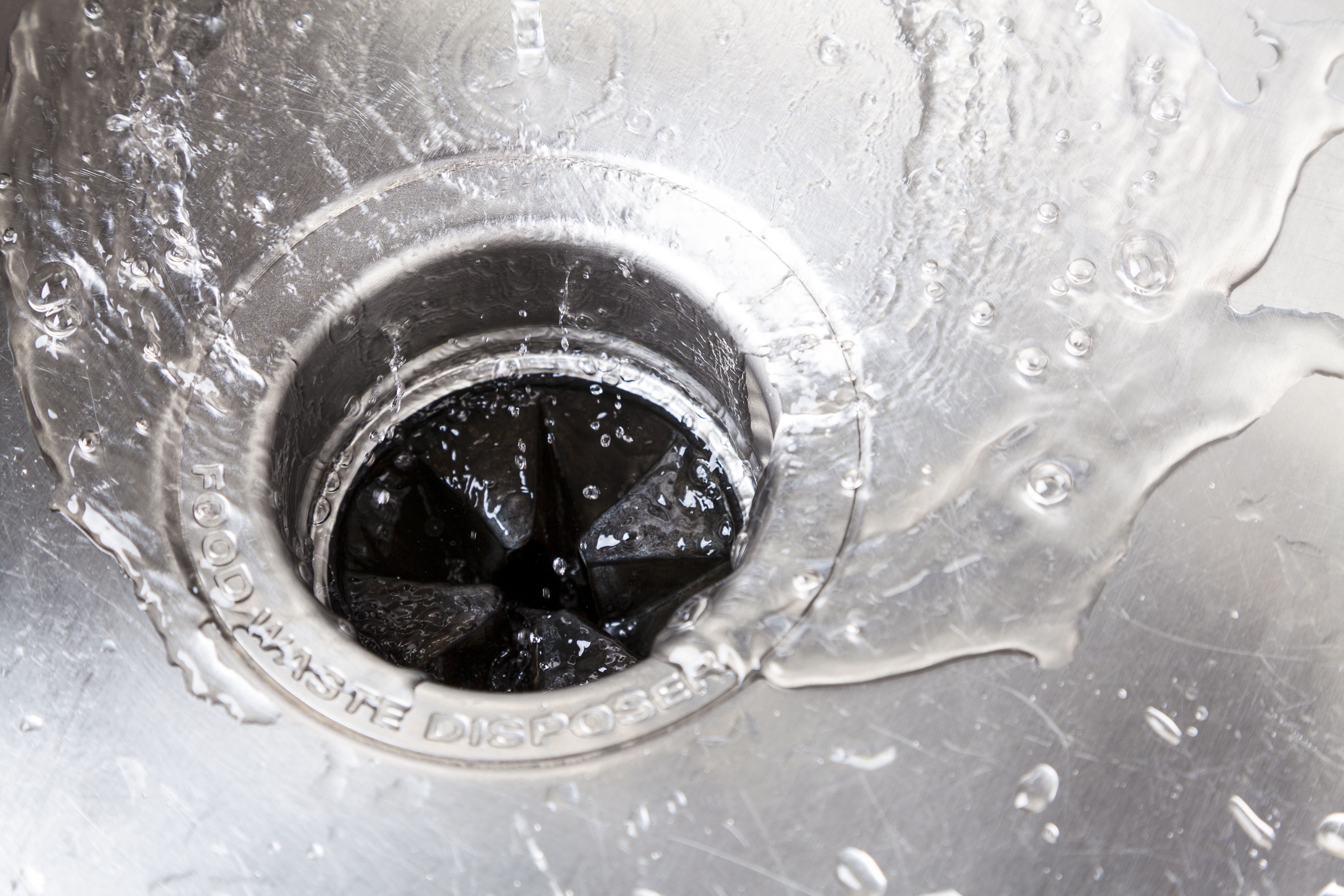
Similar to an air gap, a garbage disposal can also be clogged with food or other items. And just like an air gap, when a garbage disposal clogs, water is likely to re-enter the dishwasher. That’s because a dishwasher and garbage disposal technically share the same pipeline, so if there is backed-up food left in the drain, it will keep incoming water from the dishwasher from properly flushing.
Usually, the fix is as simple as removing items from inside the disposal. BEFORE CHECKING, make sure to disconnect the disposal from its power source and then check inside with a light. After removing any blockages, reconnect the disposal and check if it runs properly. If all you hear is a hum, something is most likely lodged between the impeller.
After unplugging the disposal again:
- Take an Allen wrench and insert it into the hexagonal inset located at the bottom of the disposal. Give it a few full turns in both directions, making sure to check for any resistance.
- If there is any resistance, gently turn the wrench the opposite direction, and then back.
- After a few rotations, flush the disposal, reconnect, and check if it is running correctly.
- If the disposal still doesn’t run, you may need to replace the system altogether.
The good news is you don’t need the disposal to run the dishwasher, so you can continue to run your dishwasher, as long as the water line is shut off from the disposal.
4. Replace a Broken Drain Hose
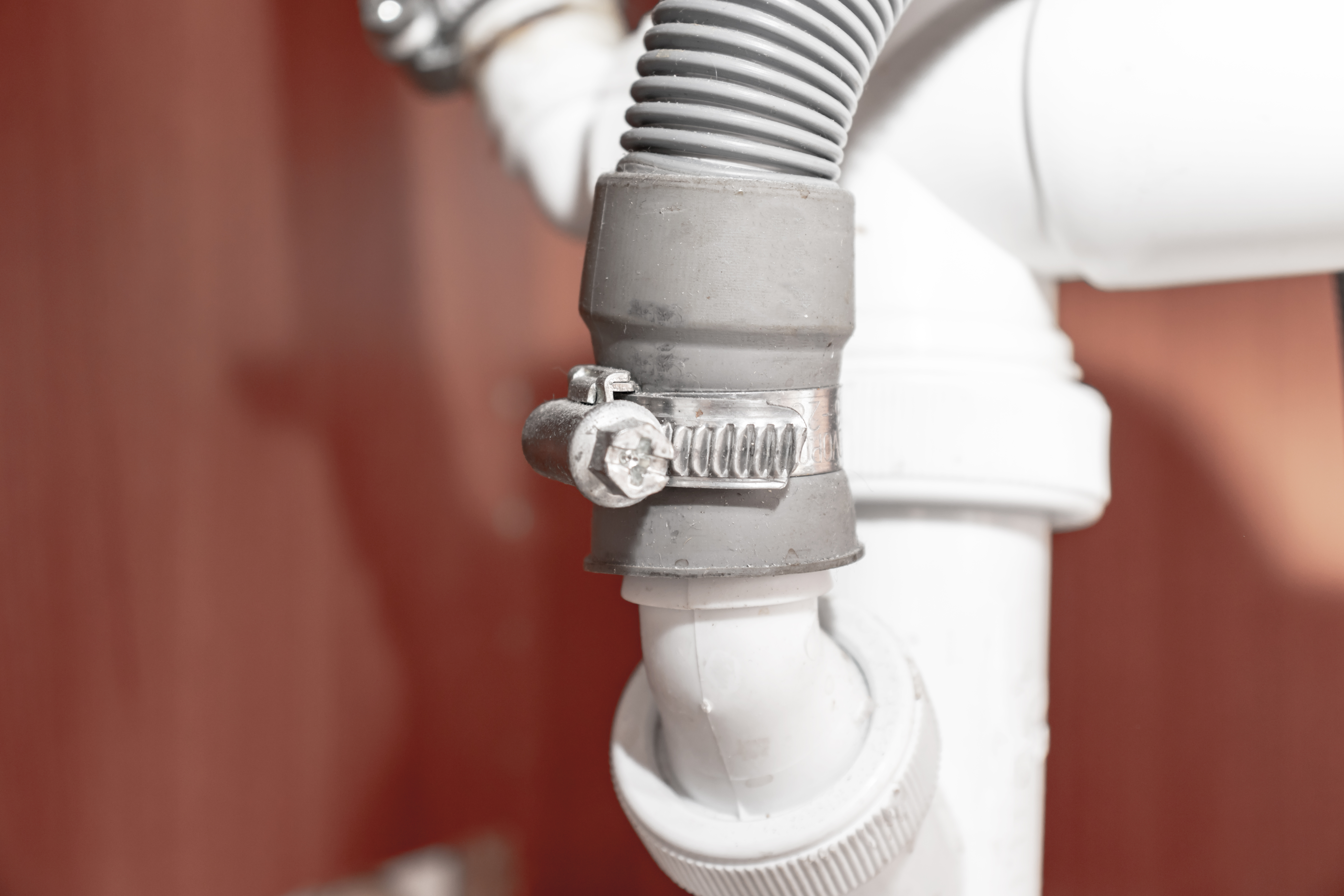
The direct line between a dishwasher and plumbing is the dishwasher hose. This hose is located behind the kickplate at the bottom of a dishwasher. Once the kickplate is removed, you can check for any kinks in the line or large objects blocking water from flowing.
Unfortunately, once a dishwasher hose kinks, it stays kinked, making it easier for food and debris to lodge in the process. In this case, it’s best to replace the hose altogether. Luckily, the solution is inexpensive and easy to do.
Here’s how to replace a dishwasher hose:
- Start by removing the kickplate at the bottom of the dishwasher.
- Once removed, line the area with a towel to catch any water that releases from the old hose.
- Next, locate where the dishwasher hose connects to either your kitchen drain or garbage disposal beneath the kitchen sink.
- Next, use pliers, and pinch the spring clip to release the hose from the connection.
- After disconnecting the hose, use tape to fix your new dishwasher hose to the end of the old hose and slowly feed the tube through the feed, being careful not to bend the line.
- Once the hose has been fed through the feed, drain any remaining water from the line for minimal mess.
- Next, Disconnect the old dishwasher hose (most often, the hose will be connected with a stainless-steel clamp) and reinstall the dishwasher kickplate.
- Using the original spring clip, connect the new dishwasher hose to the drain or garbage disposal.
- Once connected, you’ll need to make sure the new dishwasher hose is installed in a high loop to prevent water from re-entering the dishwasher.
- Once reconnected, run your dishwasher to check if water drains properly.
What Do I Do If My Dishwasher Still Doesn’t Drain?
If after all these tests water still doesn’t drain out of your dishwasher, it might be time to replace your existing dishwashing machine. Here are four reliable dishwashers we recommend if you’re in the market for a new dishwasher.
Best Energy Efficient Dishwasher: Beko 24" Fingerprint Free Stainless Steel Built In Dishwasher
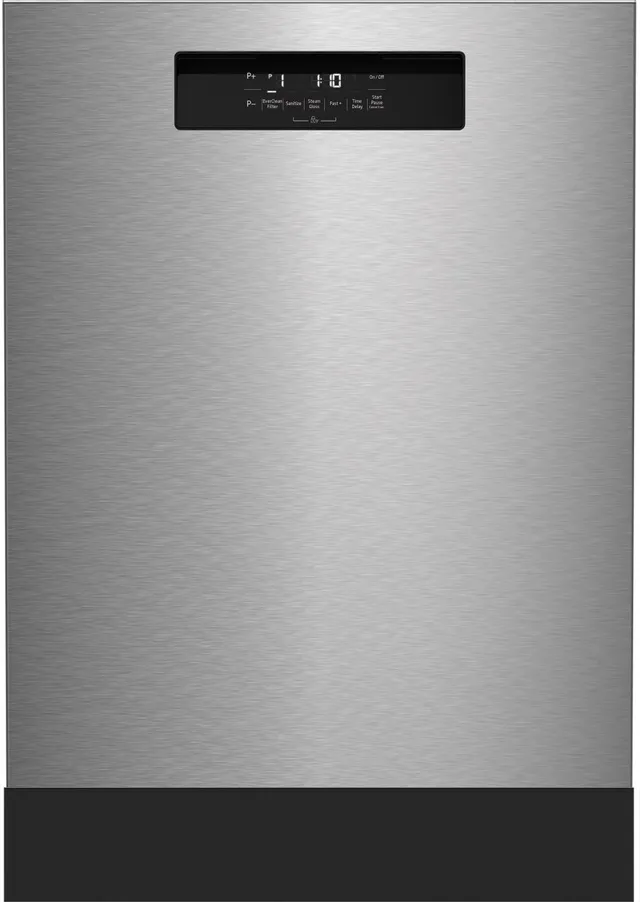
Beko DUT36522X Dishwasher Reviews
Beko solves having to constantly clean out the dishwasher mesh with EverClean filter technology. Using high water pressure, the system forces particles through the machine, essentially eliminating the need for cleaning and keeping the dishwasher free from standing water. Other highlights include CornerIntense, a dedicated bottom rack spray designed especially for heavily soiled dishes, as well as an adjustable third rack for easy and efficient loading.
Best Affordable Dishwasher: Midea 24" Stainless Steel Built-In Dishwasher
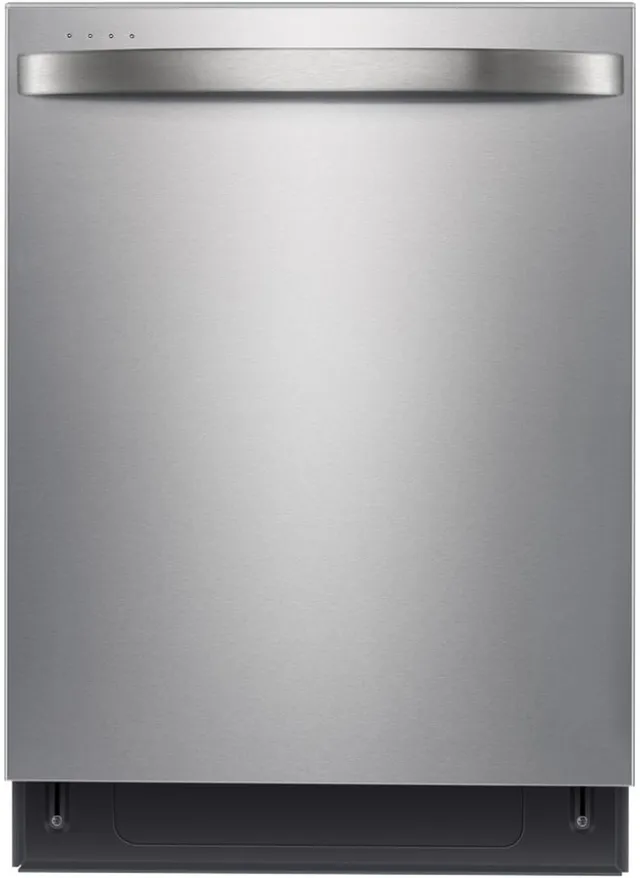
Midea MDT24H3AST Dishwasher Reviews
With 9/10 buyers recommending this Midea dishwasher, you can trust this model to be a reliable machine designed to last for years of use. The best feature on this budget dishwasher is the extended dry mode, which not only ensures your dinnerware is ready for the cupboards right form the tub, but also helps to keep the inside of the dishwasher dry. Other convenient add-ons include eight fold-down tines and a third rack for flexible loading, and a sanitize cycle for dishes that are truly sparkling clean.
Verified buyer review from Chanda D: “This is a great dishwasher”.
Best Splurge Dishwasher: KitchenAid® 24" Stainless Steel with Printshield Built In Dishwasher
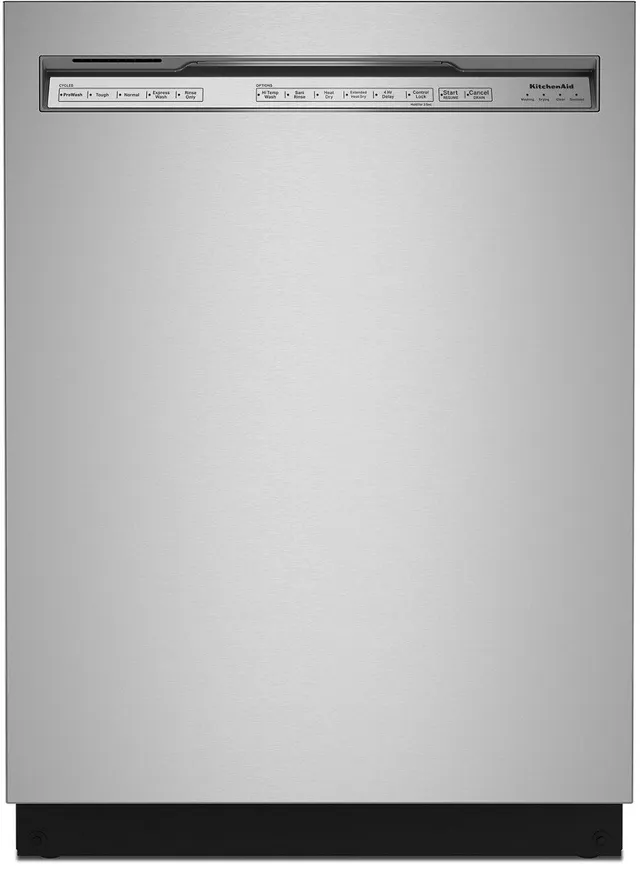
KitchenAid KDFE204KPS Dishwasher Reviews
Upgrade to this top-rated KitchenAid dishwasher to experience premium dish care at a price that’s easy on the wallet. Despite having a modest 13 place settings, you still get major loading versatility with a third rack and adjustable middle rack. Run the ProWash Cycle and let the advanced sensors determine how long and how hot each load should be for the best results.
Verified buyer review from Ellen B: “This dishwasher really gets my dishes sparkling!”
Frigidaire Gallery® 24" Smudge-Proof® Stainless Steel Built In Dishwasher
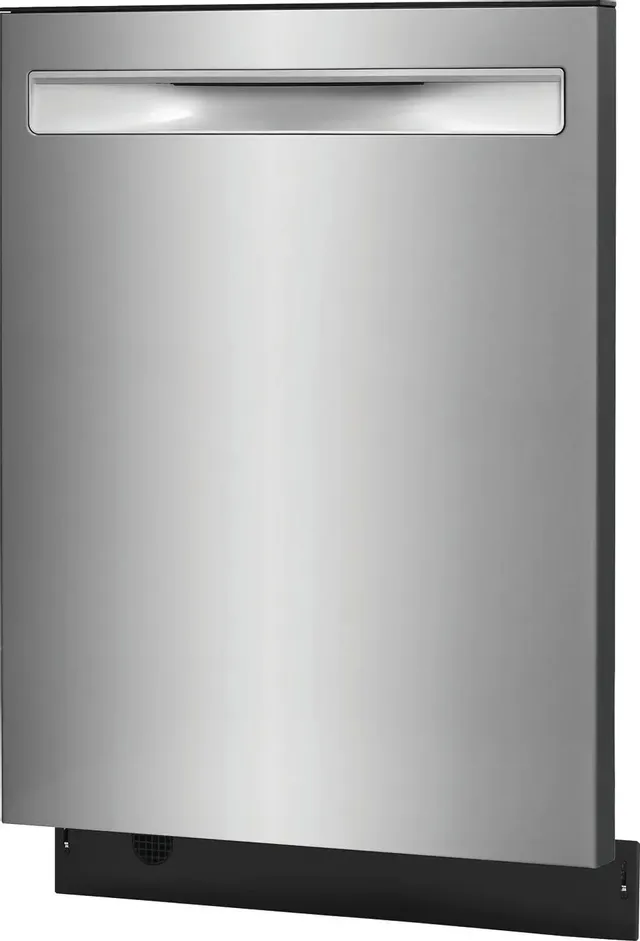
Frigidaire Gallery FGIP2479SF Dishwasher Reviews
Simple design meets mega function with this top-rated Frigidaire Gallery dishwasher with a 4.6-star rating. According to buyers, the best features on this dishwasher are the OrbitClean Wash System, an exclusive wash arm that uses a rotating spray for better water coverage. Users also enjoyed EvenDry technology, plus easy loading with a top utensil track and a height-adjustable middle rack.
Verified buyer review from ctp60 : “This Frigidaire Gallery dishwasher fits perfectly in our kitchen.”
On average, dishwasher repairs cost around $200, but in most cases, fixing a dishwasher not draining completely can be more affordable. With all this said, it’s important to remember ordinary dishwashers typically last around a decade of use, so if your dishwasher is around 10 years old and has begun to show signs of wear, such as constantly flooding, it could be an indication you need a new unit. By handling the situation before it becomes a burden, you can actually save on repair costs and enjoy the benefits of a completely new dishwashing machine.
FAQS
Here are a few more things to keep in mind if you’re experiencing a dishwasher not draining.
Is it safe to run a dishwasher with standing water in it?
No, running a dishwasher that is full of standing water can spread bacteria and cause further damage to your machine.
How do I know if my dishwasher drain hose is clogged?
There are few tell-tale signs your dishwasher hose is responsible for the standing water at the bottom of the tub. Most often, your dishwasher will “gargle,” drain very slowly, and even cause water to back up into the sink.
Do all dishwashers have a filter?
Newer dishwasher models feature mesh baskets that can be removed and cleaned in exchange for noisy food grinders. Older models before 2010 most likely don’t have removable filters, so they don’t need to be cleaned. Reviewing your model’s user manual will help you determine whether your dishwasher has a removable filter or not.
Why Trust Colder’s?
Since 1942, we at Colder's pride ourselves on offering value, selection, and service. Serving Southeastern Wisconsin with four showrooms that stock quality name-brand furniture, appliances, and mattresses, Colder’s is sure to house exactly what you are looking for. And if you can't find it on our floors, chances are, we can order it for you. As a local, family-owned company, we are always doing our best to provide the highest value at the lowest cost to everyone who walks through our doors.
Colder’s is committed not only to continuously offering can’t-miss sales but also to working with each customer, making sure that you take advantage of every possible markdown — that’s our best price guarantee.
Shop Dishwashers at Colder’s
Don’t put off happiness — and shop dishwashers online for unbeatable prices at Colder’s. Our friendly experts are always happy to help solve why your dishwasher not draining, whether you call us at 414-476-1574 or use our online chat feature. Better yet, stop by one our Colder’s locations in West Allis, Oak Creek, Delafield, and Grafton, Wisconsin to touch, see, feel, and experience home products that fulfill your dreams. Visit us today!
Learn More: Best Dishwasher Features
